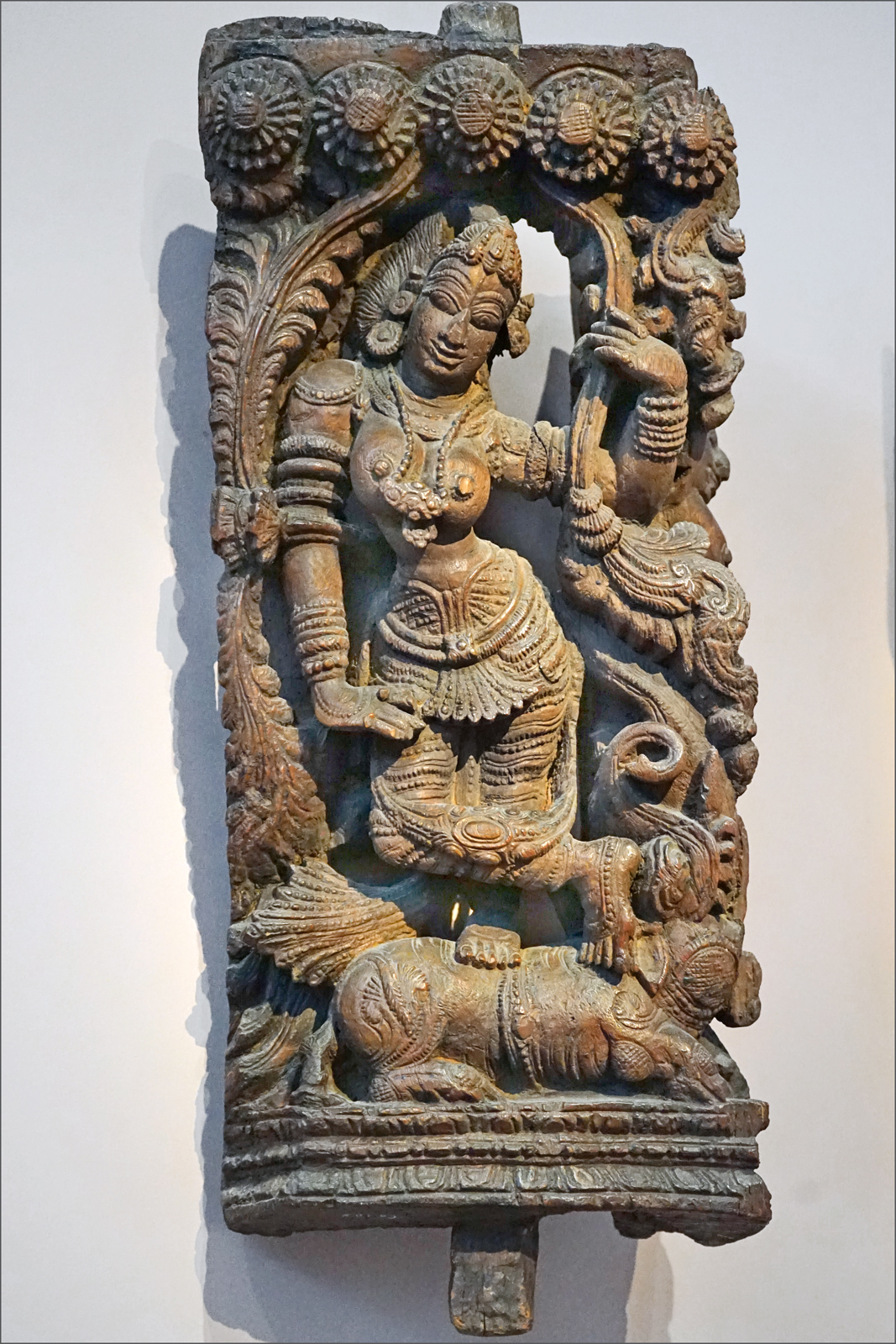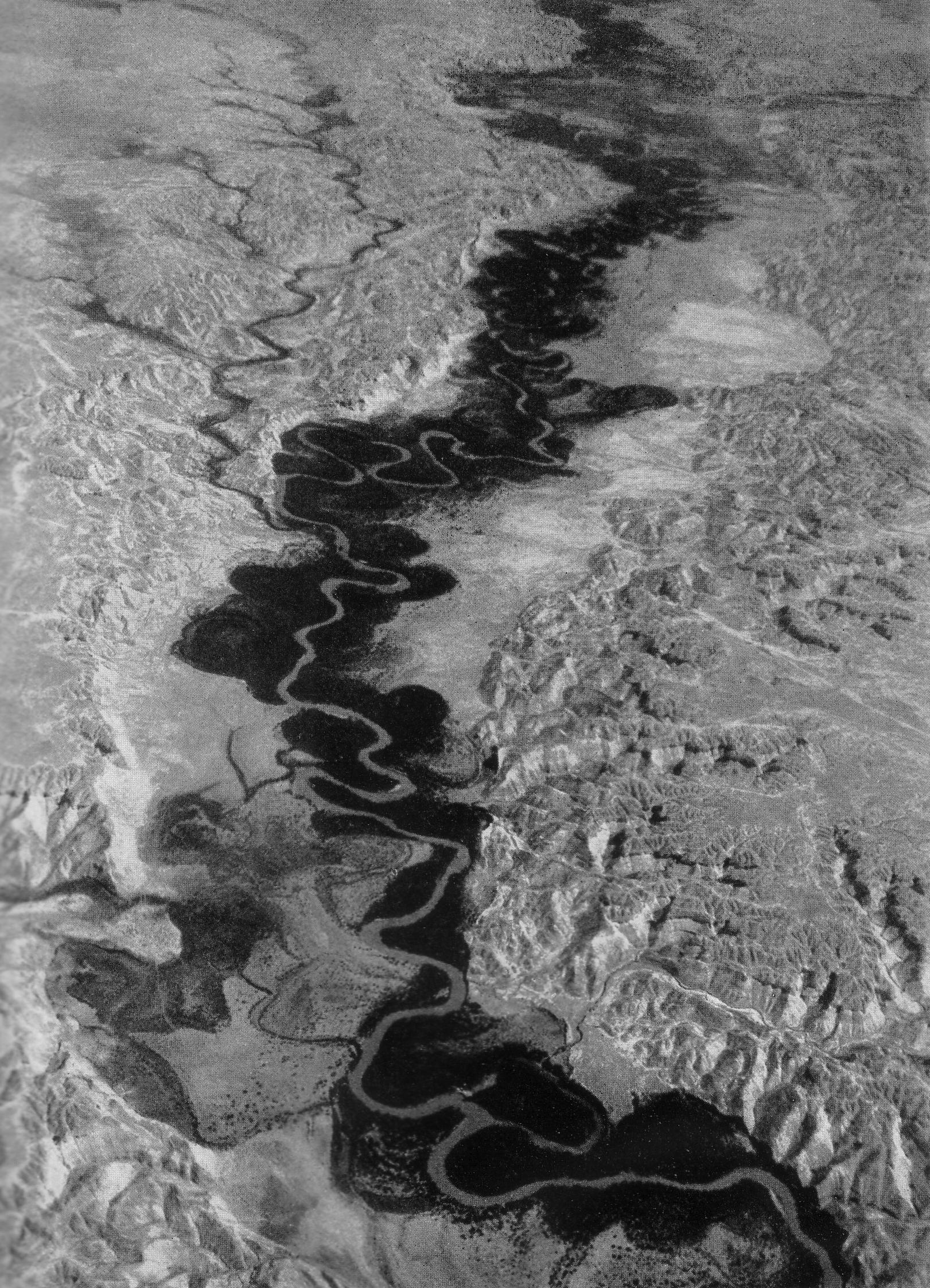|
Piriawis Ziwa
In Mandaean cosmology, Piriawis ( myz, ࡐࡉࡓࡉࡀࡅࡉࡎ; sometimes also spelled Biriawiš Lidzbarski, Mark. 1920. ''Mandäische Liturgien''. Abhandlungen der Königlichen Gesellschaft der Wissenschaften zu Göttingen, phil.-hist. Klasse, NF 17.1. Berlin.), also known as the Yardna Rabba ( "Great Jordan"), is the sacred life-giving river (''yardna'') of the World of Light. It is the heavenly counterpart of rivers on earth (Tibil), which are considered by Mandaeans to be manifestations of the heavenly Piriawis. Shilmai and Nidbai are the two guardian uthras (celestial beings) watching over Piriawis. Qolasta prayers 13 and 17 mention Piriawis-Ziwa and Piriafil-Malaka together as uthras. Other names In Book 4 of the ''Right Ginza'', Sindiriawis is mentioned as "the great ''yardna'' of the Life" () See also *Yardna *Ganga (goddess) in Hinduism *Siniawis, its corresponding opposite in the World of Darkness *Jordan River *Yesseus Mazareus Yessedekeus, the name of the Living W ... [...More Info...] [...Related Items...] OR: [Wikipedia] [Google] [Baidu] |
Mandaean Cosmology
Mandaean cosmology is the Gnostic conception of the universe in the religion of Mandaeism. Mandaean cosmology is strongly influenced by Jewish mythology, Jewish, Babylonian mythology, Babylonian, Persian mythology, Persian, Egyptian mythology, Egyptian, Greek mythology, Greek, Manichaeism, Manichaean and other Near Eastern religions and philosophies. Emanations The three major Emanationism, Emanations or "Lives" (''Hayyi'') in Mandaeism are: #The Second Life: Yushamin, the primal uthra #The Third Life: Abatur, the weigher of souls, and also the father of the ''uthri'' (plural of ''uthra'') #The Fourth Life: Ptahil, the creator of the material world The Second Life, Third Life, and Fourth Life are emanations of the First Life, Hayyi Rabbi (the Supreme God). Realms Mandaean cosmology divides the universe into three realms: #World of Light or Lightworld (''alma ḏ-nhūra'') #Tibil, or Earth #World of Darkness (Mandaeism), World of Darkness or underworld (''alma ḏ-hšuka'') Acco ... [...More Info...] [...Related Items...] OR: [Wikipedia] [Google] [Baidu] |
Right Ginza
The Right Ginza is one of the two parts of the Ginza Rabba, the longest and the most important holy scripture of Mandaeism. The other part of the Ginza Rabba is the Left Ginza. Summaries of each book (or tractate), based mostly on Häberl (2007), are provided below.Häberl, Charles G. (2007). Introduction to the New Edition, in The Great Treasure of the Mandaeans, a new edition of J. Heinrich Petermann's Thesaurus s. Liber Magni, with a new introduction and a translation of the original preface by Charles G. Häberl'. Gorgias Press, LLC. Translated excerpts are from Gelbert (2011), while Mandaic transliterations are derived from Gelbert (2011, 2021). Book 1 Book 1 contains a history of creation and of Mandaeism. The book begins with the opening line (also in Chapter 2 of Book 1): :Praised be Thou, my Lord, with a pure heart (), :thou Lord of all worlds (). Book 2 Book 2 also contains a history of creation and of Mandaeism. It has a total of four sections, since it also conta ... [...More Info...] [...Related Items...] OR: [Wikipedia] [Google] [Baidu] |
Uthras
An uthra or ʿutra ( myz, ࡏࡅࡕࡓࡀ; plural: ʿutri) is a "divine messenger of the light" in Mandaeism. Charles G. Häberl and James F. McGrath translate it as "excellency". Jorunn J. Buckley defines them as "Lightworld beings, called 'utras (sing.: 'utra 'wealth', but meaning 'angel' or 'guardian')." p8 Aldihisi (2008) compares them to the ''yazata'' of Zoroastrianism. According to Ethel S. Drower, "an 'uthra is an ethereal being, a spirit of light and Life." Uthras are benevolent beings that live in ''škinas'' ( myz, ࡔࡊࡉࡍࡀ, celestial dwellings) in the World of Light (''alma ḏ-nhūra'') and communicate with each other via telepathy. Uthras are also occasionally mentioned as being in ''anana'' ("clouds"; e.g., in '' Right Ginza'' Book 17, Chapter 1), which can also be interpreted as female consorts. Many uthras also serve as guardians (''naṭra''); for instance, Shilmai and Nidbai are the guardians of Piriawis, the Great Jordan ('' yardna'') of Life. Et ... [...More Info...] [...Related Items...] OR: [Wikipedia] [Google] [Baidu] |
Rivers In Mandaeism
A river is a natural flowing watercourse, usually freshwater, flowing towards an ocean, sea, lake or another river. In some cases, a river flows into the ground and becomes dry at the end of its course without reaching another body of water. Small rivers can be referred to using names such as creek, brook, rivulet, and rill. There are no official definitions for the generic term river as applied to geographic features, although in some countries or communities a stream is defined by its size. Many names for small rivers are specific to geographic location; examples are "run" in some parts of the United States, "burn" in Scotland and northeast England, and "beck" in northern England. Sometimes a river is defined as being larger than a creek, but not always: the language is vague. Rivers are part of the water cycle. Water generally collects in a river from precipitation through a drainage basin from surface runoff and other sources such as groundwater recharge, springs, ... [...More Info...] [...Related Items...] OR: [Wikipedia] [Google] [Baidu] |
Mythological Rivers
Myth is a folklore genre consisting of narratives that play a fundamental role in a society, such as foundational tales or origin myths. Since "myth" is widely used to imply that a story is not objectively true, the identification of a narrative as a myth can be highly controversial. Many adherents of religions view their own religions' stories as truth and so object to their characterization as myth, the way they see the stories of other religions. As such, some scholars label all religious narratives "myths" for practical reasons, such as to avoid depreciating any one tradition because cultures interpret each other differently relative to one another. Other scholars avoid using the term "myth" altogether and instead use different terms like "sacred history", "holy story", or simply "history" to avoid placing pejorative overtones on any sacred narrative. Myths are often endorsed by secular and religious authorities and are closely linked to religion or spirituality. Many soc ... [...More Info...] [...Related Items...] OR: [Wikipedia] [Google] [Baidu] |
Sethianism
The Sethians were one of the main currents of Gnosticism during the 2nd and 3rd century CE, along with Valentinianism and Basilideanism. According to John D. Turner, it originated in the 2nd century CE as a fusion of two distinct Hellenistic Judaic philosophies and was influenced by Christianity and Middle Platonism. However, the exact origin of Sethianism is not properly understood. History Mentions The Sethians (Latin ''Sethoitae'') are first mentioned, alongside the Ophites, in the 2nd century, by Irenaeus (who was antagonistic towards gnosticism) and in Pseudo-Tertullian (Ch. 30). According to Frederik Wisse, all subsequent accounts appear to be largely dependent on Irenaeus. Hippolytus repeats information from Irenaeus. According to Epiphanius of Salamis (c. 375), Sethians were in his time found only in Egypt and Palestine, but fifty years earlier, they had been found as far away as Greater Armenia. Philaster's (4th century CE) ''Catalogue of Heresies'' places the O ... [...More Info...] [...Related Items...] OR: [Wikipedia] [Google] [Baidu] |
Yesseus Mazareus Yessedekeus
In Sethian Gnostic texts, Yesseus Mazareus Yessedekeus is the personification of the Living Water. He is mentioned in the Nag Hammadi tractates of the ''Holy Book of the Great Invisible Spirit'', ''Zostrianos'', and ''Apocalypse of Adam''. Etymology The etymology of the name is as follows. *''Yesseus'' from Jesus *''Mazareus'' from Nazarene (Greek: ''nazōraios'') *''Yessedekeus'' from "the righteous" (Greek: ''ho dikaios'') Parallels in Mandaeism In Mandaeism, the uthra (celestial spirit) Piriawis Ziwa is the personification of the heavenly river of living water. Qolasta prayers 13 and 17 mention Piriawis Ziwa and Piriafil Malaka together as uthras. In Mandaean scriptures such as the ''Ginza Rabba'', (pronounced ) is mentioned as the personification of the Euphrates, which is considered to be the earthly manifestation of the heavenly yardna or flowing river (similar to the Yazidi concept of Lalish being the earthly manifestation of its heavenly counterpart). See also * ... [...More Info...] [...Related Items...] OR: [Wikipedia] [Google] [Baidu] |
Siniawis
In Mandaean cosmology, Siniawis ( myz, ࡎࡉࡍࡉࡀࡅࡉࡎ) is a region in the World of Darkness (''alma ḏ-hšuka'') or underworld. It is described as "the lower earth of the darkness" () in Chapter 1 of Book 5 in the ''Right Ginza''. See also *Piriawis In Mandaean cosmology, Piriawis ( myz, ࡐࡉࡓࡉࡀࡅࡉࡎ; sometimes also spelled Biriawiš Lidzbarski, Mark. 1920. ''Mandäische Liturgien''. Abhandlungen der Königlichen Gesellschaft der Wissenschaften zu Göttingen, phil.-hist. Klasse, NF ..., its corresponding opposite in the World of Light References Mandaean cosmology Conceptions of hell Underworld {{cosmology-stub ... [...More Info...] [...Related Items...] OR: [Wikipedia] [Google] [Baidu] |
Ganga (goddess)
Ganga ( sa, गङ्गा or गंगा, Gaṅgā) is the personification of the river Ganges, who is worshipped by Hindus as the goddess of purification and forgiveness. Known by many names, Ganga is often depicted as a fair, beautiful woman, riding a divine crocodile-like creature called the makara. Some of the earliest mentions of Ganga are found in the Rigveda, where she is mentioned as the holiest of the rivers. Her stories mainly appear in post-Vedic texts such as the ''Ramayana'', ''Mahabharata,'' and the ''Puranas''. The Ramayana describes her to be the firstborn of Himavat, the personification of the Himalayas, and the sister of the mother goddess Parvati. However, other texts mention her origin from the preserver deity, Vishnu. Legends focus on her descent to earth, which occurred because of a royal-sage Bhagiratha, aided by the god Shiva. In the epic Mahabharata, Ganga is the mother of the warrior Bhishma in a union with the Kuru Kingdom, Kuru king Shantanu. In ... [...More Info...] [...Related Items...] OR: [Wikipedia] [Google] [Baidu] |
Yardna
In Mandaeism, a yardna ( myz, ࡉࡀࡓࡃࡍࡀ, lit=Jordan) or yardena ([]; ar, یردنا) is a body of flowing fresh water (or in myz, ࡌࡉࡀ ࡄࡉࡉࡀ, translit=mia hiia, lit=living water; pronounced ''mia h(a)yya'') that is suitable for ritual use as baptismal water. The masbuta and other Mandaean rituals such as the tamasha can only be performed in a yardna. Stagnant fresh water, brackish water, and seawater are not considered to be yardnas. Examples of yardnas Although etymologically related to the Hebrew word ''yarden'' (), or the Jordan River, a yardna in Mandaeism can refer to any flowing river. Traditionally, these were typically the Euphrates (Mandaic: ''Praš''), Tigris (Mandaic: ''Diglat''), and Karun (Mandaic: ''ʿUlat'') rivers. The Euphrates is called (; pronounced ) in the ''Ginza Rabba''. In Mandaean scriptures, the Euphrates is considered to be the earthly manifestation of the heavenly yardna or flowing river (similar to the Yazidi concept of L ... [...More Info...] [...Related Items...] OR: [Wikipedia] [Google] [Baidu] |
Jordan River
The Jordan River or River Jordan ( ar, نَهْر الْأُرْدُنّ, ''Nahr al-ʾUrdunn'', he, נְהַר הַיַּרְדֵּן, ''Nəhar hayYardēn''; syc, ܢܗܪܐ ܕܝܘܪܕܢܢ ''Nahrāʾ Yurdnan''), also known as ''Nahr Al-Sharieat'' ( ar, نهر الشريعة), is a river in the Middle East that flows roughly north to south through the Sea of Galilee (Hebrew: כנרת Kinneret, Arabic: Bohayrat Tabaraya, meaning Lake of Tiberias) and on to the Dead Sea. Jordan and the Golan Heights border the river to the east, while the West Bank and Israel lie to its west. Both Jordan and the West Bank take their names from the river. The river holds major significance in Judaism and Christianity. According to the Bible, the Israelites crossed it into the Promised Land and Jesus of Nazareth was baptized by John the Baptist in it. Geography The Jordan River has an upper course from its sources to the Sea of Galilee (via the Bethsaida Valley), and a lower course so ... [...More Info...] [...Related Items...] OR: [Wikipedia] [Google] [Baidu] |



.jpg)
